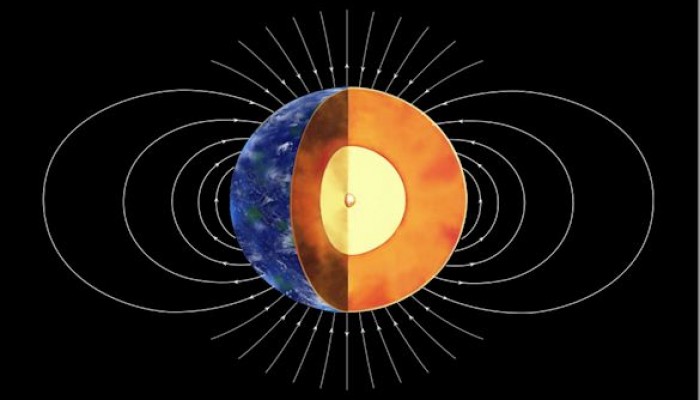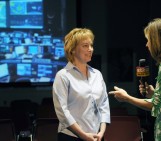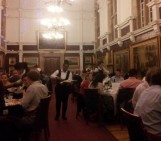
This week, my PhD supervisor, Andy Biggin, had a paper out in Nature. The findings of this new research point towards the Earth’s inner core being older than we’d previously thought. Recent estimates, suggest that the Earth’s solid inner core started forming between half a billion and one billion years ago. However, Andy’s (and co-workers) new measurements of ancient rocks as they cool from magma have indicated that it may actually have started forming more than half a billion years earlier.
I’m not going to go into the details of the findings, you can learn more about those from the paper itself and also from the press coverage (BBC news and an article in The Conversation by Andy himself). Instead, below you’ll find a blog post which Andy originally posted on the Liverpool Geomagnetism Group blog (I reproduced it here with his permission). I found it interesting because it explores (from a scientists’ perspective) the sometimes difficult relationship between research and media coverage. One way to inspire future generations of scientists is by getting new and exciting research in the public eye; something not always easy when researching the workings of the inner Earth – it just doesn’t have the mass appeal and wow factor of volcanoes, earthquakes and tsunamis! The new research has had plenty of media coverage, as Andy describes below, and it’s exciting, not only for palaeomagnetism, but also the broader public as it shed’s light on how the Earth formed and came to be as it is now.
Pop-artist Andy Warhol famously stated that: “In the future, everyone will be world-famous for 15 minutes”. I suspect yesterday may be the closest we will ever get to proving him right.
A paper on which I am lead-author claims that we have may have pinned down the point in Earth’s history when the inner core first started to freeze at the centre of the Earth to between 1 and 1.5 billion years ago. I already thought this was big news so was a bit deflated when Nature decided not to run with the excellent picture (above) created by Kay Lancaster (cartographer at the University of Liverpool) on its cover or even feature it in its press release.
Nevertheless, our excellent press officer at Liverpool helped produce a great press release which saw a story featured on the popular Phys.org website from the outset and an article in one of Spain’s top newspapers El Pais.
Things were a bit slow-burning for a while – except in India and Finland. Then the break-though – a beautiful piece by Simon Redfern for BBC news online! I checked and it was even linked to the front page of BBC news (though you did have to scroll down a LONG way to get it…).
This was quickly followed up by a piece on the Daily Mail which our press officer tells me is the “most read online news site in the world”. A number of other things have followed including a post on one of my favourite blogs – IFLScience.
Then, just as I was packing up to go home, I received a phone call from the BBC World Service who wanted a short interview. I obliged in the evening and my nervous responses aired a few hours later. You can listen to the podcast here (it is the very last feature – “And finally…”). They refer before and after the interview to the finding as being that the magnetic field is much older than previously thought – incorrect in this specific case but relevant to another recent finding, albeit one that Liverpool people were not involved in making.
More informative is a piece I wrote for “The Conversation”. There has only been one comment at the time of writing – hopefully they will improve…
A summary from our press office indicates that there are 39 news outlets and counting featuring the story and tweets still coming through every few minutes. The coverage extends over at least 11 countries ranging from USA to China, Argentina to Pakistan so, while I can, I am claiming (brief) world fame for our research!
By Andy Biggin, Lecturer at the University of Liverpool
This article was originally posted in Geomagnetism.org, you can view the post here.



